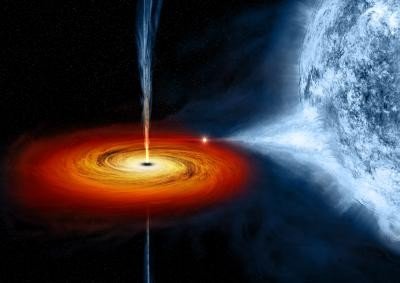CAMBRIDGE, Mass., Nov. 17 (UPI) -- Data from NASA's Chandra X-ray Observatory has revealed new details about the birth of a famous black hole millions of years ago, U.S. astronomers say.
More than 30 years ago, Stephen Hawking famously placed -- and eventually lost -- a bet against the existence of a black hole in Cygnus X-1.















